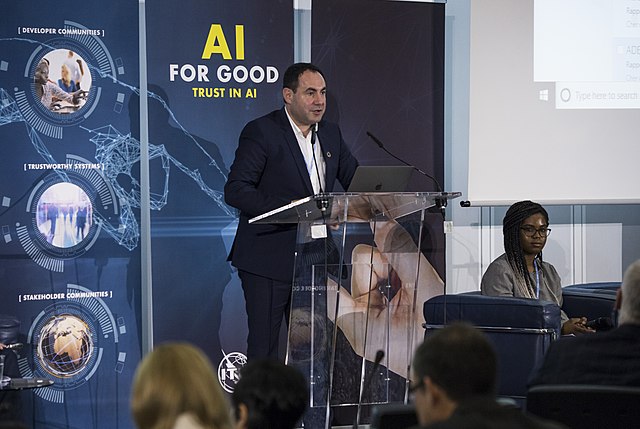AI Policy & Law
This section serves as your comprehensive guide to the ever-evolving landscape of artificial intelligence, robotics, drone technology, and autonomous vehicles. Here, we delve deep into current policies, laws, and regulations shaping the future of AI and automation. Discover the impact of legislation on development and deployment, and how it affects you. Your journey into the intricacies of AI policy and law starts here.




Artificial Intelligence 2024 Legislation
The National Conference of State Legislatures (NCSL) provides a comprehensive overview of artificial intelligence (AI) legislation introduced and enacted across various U.S. jurisdictions in 2024. In that year, over 45 states, along with Puerto Rico, the Virgin Islands, and Washington, D.C., introduced AI-related bills, with 31 states, Puerto Rico, and the Virgin Islands adopting resolutions or enacting legislation. Key legislative actions include Colorado's comprehensive AI law addressing algorithmic discrimination, Florida's grants for AI integration in education, Hawaii's AI-driven wildfire forecasting program, Indiana's establishment of an AI task force, Maryland's policies for AI use in state government, New Hampshire's criminalization of fraudulent deepfakes, South Dakota's clarification on computer-generated child pornography, Tennessee's regulations on AI use in public education, Utah's creation of the Artificial Intelligence Policy Act, the Virgin Islands' centralized crime data system, Washington's support for AI-focused tech startups, and West Virginia's formation of a select committee on AI. These legislative efforts reflect a growing recognition of AI's transformative potential and the necessity for standards to ensure its responsible deployment.
Reference:
National Conference of State Legislatures. (2024, September 9). Artificial Intelligence 2024 Legislation. https://www.ncsl.org/technology-and-communication/artificial-intelligence-2024-legislation
REMOVING BARRIERS TO AMERICAN LEADERSHIP IN ARTIFICIAL INTELLIGENCE
The Executive Order on Removing Barriers to American Leadership in Artificial Intelligence, issued on January 23, 2025, aims to reinforce U.S. global leadership in AI by eliminating policies that hinder innovation. The order emphasizes the importance of unbiased AI systems, economic competitiveness, and national security. It revokes Executive Order 14110 (2023), which previously governed AI regulations, and mandates a new AI action plan within 180 days, coordinated by top White House advisors. Additionally, it directs an immediate review and revision of regulations that may obstruct AI advancements, with a focus on fostering a free-market, research-driven AI ecosystem. The Office of Management and Budget (OMB) will align its AI policies accordingly within 60 days. The order ensures compliance with existing laws and budgetary constraints but does not grant legal rights to individuals.
Reference:
The White House. (2025, January 23). Removing barriers to American leadership in artificial intelligence [Executive order]. The White House. https://www.whitehouse.gov/presidential-actions/2025/01/removing-barriers-to-american-leadership-in-artificial-intelligence/
AI RISK MANAGEMENT FRAMEWORK
On April 29, 2024, NIST released a draft publication based on the AI Risk Management Framework (AI RMF) to help manage the risk of Generative AI. The draft AI RMF Generative AI Profile can help organizations identify unique risks posed by generative AI and proposes actions for generative AI risk management that best aligns with their goals and priorities. Developed over the past year and drawing on input from the NIST generative AI public working group of more than 2,500 members, the guidance centers on a list of 12 risks and more than 400 actions that developers can take to manage them. More information is available here. On April 30, 2024, NIST posted a crosswalk between the NIST AI Risk Management Framework (AI RMF) and the Japan AI Guidelines for Business (AI GfB.)
Reference:
National Institute of Standards and Technology. (n.d.). AI Risk Management Framework. NIST. Retrieved May 14, 2024, from https://www.nist.gov/itl/ai-risk-management-framework
Executive Order on the Safe, Secure, and Trustworthy Development and Use of Artificial Intelligence
By the authority vested in me as President by the Constitution and the laws of the United States of America, it is hereby ordered as follows:
Section 1. Purpose. Artificial intelligence (AI) holds extraordinary potential for both promise and peril. Responsible AI use has the potential to help solve urgent challenges while making our world more prosperous, productive, innovative, and secure. At the same time, irresponsible use could exacerbate societal harms such as fraud, discrimination, bias, and disinformation; displace and disempower workers; stifle competition; and pose risks to national security. Harnessing AI for good and realizing its myriad benefits requires mitigating its substantial risks. This endeavor demands a society-wide effort that includes government, the private sector, academia, and civil society.
My Administration places the highest urgency on governing the development and use of AI safely and responsibly, and is therefore advancing a coordinated, Federal Government-wide approach to doing so. The rapid speed at which AI capabilities are advancing compels the United States to lead in this moment for the sake of our security, economy, and society.
In the end, AI reflects the principles of the people who build it, the people who use it, and the data upon which it is built. I firmly believe that the power of our ideals; the foundations of our society; and the creativity, diversity, and decency of our people are the reasons that America thrived in past eras of rapid change. They are the reasons we will succeed again in this moment. We are more than capable of harnessing AI for justice, security, and opportunity for all.
Reference:
Executive Office of the President. (2023, October 30). Executive order on the safe, secure, and trustworthy development and use of artificial intelligence. The White House. Retrieved from https://www.whitehouse.gov/briefing-room/presidential-actions/2023/10/30/executive-order-on-the-safe-secure-and-trustworthy-development-and-use-of-artificial-intelligence/
